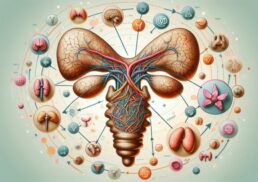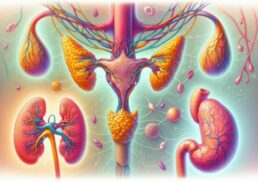How can I quit smoking effectively? This guide provides practical tips, benefits, and strategies to help you through your quitting journey. Discover how to manage cravings, create a quit plan, and use support systems for a smoke-free life.
Table of Contents
Key Takeaways
Developing a personalized quit plan is crucial for identifying triggers and creating strategies to cope with cravings.
Utilizing nicotine replacement therapy (NRT) and seeking professional counseling can significantly enhance your chances of quitting smoking successfully.
Staying physically active and employing relaxation techniques can help manage withdrawal symptoms and stress, making the transition to a smoke-free life smoother.
Understanding the Benefits of Quitting Smoking

Quitting smoking enhances your overall health and quality of life almost immediately. From the moment you stop smoking, your body begins to heal. Within just 20 minutes, your heart rate and blood pressure return to normal levels. Over time, the benefits compound. For instance, within 1-2 years, your risk of coronary heart disease and heart attack drops significantly. And there’s more – stopping smoking can add up to 10 years to your life expectancy.
The benefits of quitting smoking are not just limited to internal health. Quitting smoking can also improve your appearance. Here are some ways quitting smoking can benefit your appearance:
The reduction in exposure to tobacco smoke decreases the likelihood of developing wrinkles, giving your skin a healthier, more youthful look.
The risk of lung cancer drops by half after 10-15 years of quitting.
The chances of developing other cancers, such as those in the bladder, esophagus, and kidney, are significantly reduced.
Mental health also sees a positive shift. Smokers are more likely to experience anxiety or depression. By quitting smoking, you can alleviate these symptoms, especially when combined with physical activity and connecting with supportive people. Every cigarette you don’t smoke is a step towards a healthier, happier you.
Create Your Own Quit Plan
Formulating a customized quit plan serves as a pivotal move in your quest to stop smoking completely. A well-thought-out plan helps you identify and manage triggers, set a quit date, and develop strategies to cope with cravings. Start by throwing away all cigarettes, matches, and lighters on or before your quit day to eliminate any reminders. This physical act symbolizes your commitment to quitting smoking.
Recognizing your triggers forms another significant part of the process. Identify situations, activities, or people that make you want to smoke and plan ways to avoid or cope with these triggers. For example, if you associate smoking with your morning coffee, consider switching to a different beverage or changing your routine. Consider talking to friends or family who smoke to see if they want to quit with you – having a quit buddy can provide mutual support and motivation.
Check out My quit plan – Stopping smoking.
Nicotine Replacement Therapy Options

Nicotine replacement therapy (NRT) is a well-established technique for alleviating withdrawal symptoms and curbing cravings, aiding your efforts to quit smoking. NRT options include:
Nicotine patches
Nicotine gum
Nicotine lozenges
Nicotine nasal sprays
Nicotine inhalers
These therapies work by supplying your body with nicotine without the harmful chemicals found in cigarettes, helping to reduce stress and manage cravings.
Combining different forms of NRT can further improve your chances of quitting smoking successfully. For example, using a long-acting nicotine patch along with short-acting options like gum or lozenges can provide a steady supply of nicotine while also addressing sudden cravings. Gradually decreasing the nicotine dosage over several weeks can enhance the effectiveness of NRT, making the transition to a smoke-free life smoother.
Manage Cravings and Withdrawal Symptoms
Controlling cravings and withdrawal symptoms forms an integral component of the cessation process. Here are some strategies to help:
Chewing sugarless gum, hard candy, raw carrots, nuts, sunflower seeds, or chewing gum can keep your mouth busy and distract you from cravings.
Keeping busy and staying active are also effective strategies to make urges less of a problem.
Remember, having just one cigarette can trigger a relapse, so it’s important to resist the temptation.
Withdrawal symptoms like headaches, mood swings, and fatigue are common and can be challenging to deal with. Feeling irritable or grouchy is normal, but taking deep breaths and reminding yourself why you’re quitting can help ease withdrawal symptoms. Acknowledging that smoking withdrawal symptoms are signs of your body healing can keep you motivated.
Avoiding Triggers and Staying Smoke-Free

Maintaining a smoke-free lifestyle and circumventing triggers necessitates a deliberate shift in your daily routines and habits, including avoiding secondhand smoke. Start by identifying and avoiding people, places, or situations that trigger the urge to smoke. Developing new habits, such as switching from coffee to water or juice if you associate cigarettes with your morning coffee, can help break the cycle.
Keeping your hands busy with tasks like cleaning, gardening, or needlework can also help you resist the urge to smoke. Use the money saved from not buying cigarettes for a healthy treat or save it for a bigger reward like a vacation.
Remember, a one-time slip does not mean a full relapse; analyze the circumstances and recommit to staying smoke-free.
Support Systems and Resources
Support networks play an indispensable role in your path to quitting smoking. Connecting with a family member, friend, or support group can help you resist tobacco cravings. Chatting on the phone, going for a walk, or sharing a few laughs can provide the support you need. Support groups and counseling can also encourage you to keep going and help identify effective quit-smoking strategies.
There are several online resources available to help you quit smoking, including:
Smokefree.gov: offers tailored resources for specific groups
YouCanQuit2: sponsored by the Department of Defense for military personnel and their families
NCI’s Smoking Quitline: provides individualized counseling and referrals to other resources
Department of Health and Human Services’ toll-free telephone quitline
These local resources can provide you with the support and guidance you need to quit smoking.
The Role of Physical Activity
Physical activity is instrumental in mitigating withdrawal symptoms and enhancing your mood. Here are some benefits of exercise for quitting smoking:
Short bouts of exercise can help distract you from tobacco cravings and make them go away.
Resistance training, such as weight training, improves lung function and health risk factors associated with smoking.
Both aerobic and resistance-based exercises can reduce the risk of smoking-related cancers, such as lung cancer.
Exercise can also help:
manage weight
provide an activity to fill the time
reduce stress
boost your mood
distract you from smoking
Whether it’s a brisk walk, a yoga session, or lifting weights, physical activity is a powerful tool in your quit-smoking arsenal.
Relaxation Techniques to Reduce Stress
Employing relaxation techniques proves vital in handling stress throughout the cessation process. Some effective relaxation techniques include:
Deep breathing or meditation, which can help reduce stress and provide a good alternative to smoking for a quiet moment to think.
Deeply inhaling clean, fresh air, which can mimic the calming effect of smoking and help you relax.
Managing stress through activities like meditation, listening to music, writing, or volunteering, which can prevent a return to smoking.
Other relaxation techniques include:
Muscle relaxation
Yoga
Visualization
Listening to calming music
These methods can help you resist tobacco cravings and stay focused on your goal of quitting smoking.
Healthy Eating and Weight Management
Prioritizing healthy eating patterns is key to deter substituting smoking with unhealthy snacking habits. Weight gain after quitting smoking can be caused by nicotine withdrawal effects like a slower metabolism and increased hunger. To manage weight, it is important to:
Prioritize healthy snacks like celery or carrots
Avoid high-calorie, sugary snacks
Stay hydrated and drink plenty of water
Engage in regular physical activity
By following these tips, you can maintain a healthy weight while quitting smoking.
Tracking your food choices can help prevent replacing smoking with unhealthy snacking habits. By being mindful of what you eat, you can maintain a healthy weight and avoid the pitfalls of post-quitting weight gain.
Using Technology to Help You Quit
Technology serves a central function in aiding individuals to quit smoking by offering tools, monitoring progress, and supplying motivation. Some apps that can help you quit smoking include:
quitSTART: offers tips, information, and challenges to help you quit smoking
EasyQuit: provides support and motivation to quit smoking
Get Rich or Die Smoking: shows users how much money they save by not smoking
Quit Genius: uses cognitive behavioral therapy (CBT) principles to guide the quitting process
Kwit: provides motivational cards to access during cravings
These apps can be a valuable resource in your journey to quit smoking.
Online resources like online stop-smoking programs and quitter’s blogs provide additional support for those looking to quit smoking. These digital tools can help track progress, provide motivation, and offer practical tools for quitting smoking.
Professional Help and Counseling
Turning to professional assistance and counseling can considerably strengthen your efforts to quit smoking. Ask your doctor if nicotine replacement therapy or other quit medications are suitable for you. Counseling can help in resisting tobacco cravings by providing strategies and emotional support. When trying to quit smoking, there are various methods that can be helpful, including:
quit-smoking classes
apps
counseling
medication
hypnosis
These options offer different ways to support individuals in their journey to quit smoking.
You can reach for support and counseling by calling 800-QUIT-NOW (800-784-8669). This telephone quit line is available for assistance. This service offers individualized counseling and referrals to other resources that can help you stay on track. Professional support can make a significant difference in your ability to quit smoking and maintain a smoke-free life.
Remind Yourself of the Benefits
Consistently recalling the benefits of quitting smoking can assist in maintaining your focus and drive. Here are some reasons for quitting smoking:
Improved health
Saving money
Better breath and oral hygiene
Reduced risk of cancer and other diseases
Improved sense of taste and smell
Increased energy levels
Improved fertility
Better skin appearance
Writing down and reading the list of reasons for quitting every day serves as a constant reminder of why you want to stop smoking and resist tobacco cravings. Focusing on positive outcomes like these can help manage stress during the quitting process.
Reminding yourself of the benefits helps in overcoming both physical and mental withdrawals. Keeping these benefits in mind can help you navigate the challenges of quitting smoking and stay committed to your goal.
Summary
Quitting smoking is a challenging but rewarding journey. By understanding the numerous benefits, creating a personalized quit plan, and utilizing various strategies and resources, you can successfully stop smoking and stay smoke-free. From managing cravings and withdrawal symptoms to avoiding triggers and engaging in physical activity, each step brings you closer to a healthier, happier life.
Remember, you’re not alone in this journey. Support systems, professional help, and technology can provide the assistance and motivation you need. Keep reminding yourself of the benefits and stay committed to your goal. The decision to quit smoking is one of the best choices you can make for your health and well-being. Embrace this journey with confidence and determination – you’ve got this!
Frequently Asked Questions
What are the immediate benefits of quitting smoking?
Quitting smoking can lead to immediate benefits such as normalizing blood pressure and heart rate within 20 minutes. Take the first step towards a healthier lifestyle today.
How can I manage cravings when quitting smoking?
You can manage cravings when quitting smoking by chewing sugarless gum, staying active, and using quit-smoking medicines. These strategies can help you overcome the urge to smoke and stay on track with your quit journey.
Are there any effective nicotine replacement therapies?
Yes, nicotine replacement therapies such as patches, gum, lozenges, nasal sprays, and inhalers can effectively reduce withdrawal symptoms. These options can help you quit smoking.
How can physical activity help in quitting smoking?
Engaging in physical activity can help alleviate withdrawal symptoms, improve mood, and distract from cravings, making it easier to quit smoking.
What resources are available to support my quit-smoking journey?
You have access to support groups, counseling, Smokefree.gov, and the NCI’s Smoking Quitline to support your quit-smoking journey. Take advantage of these resources to help you succeed.









